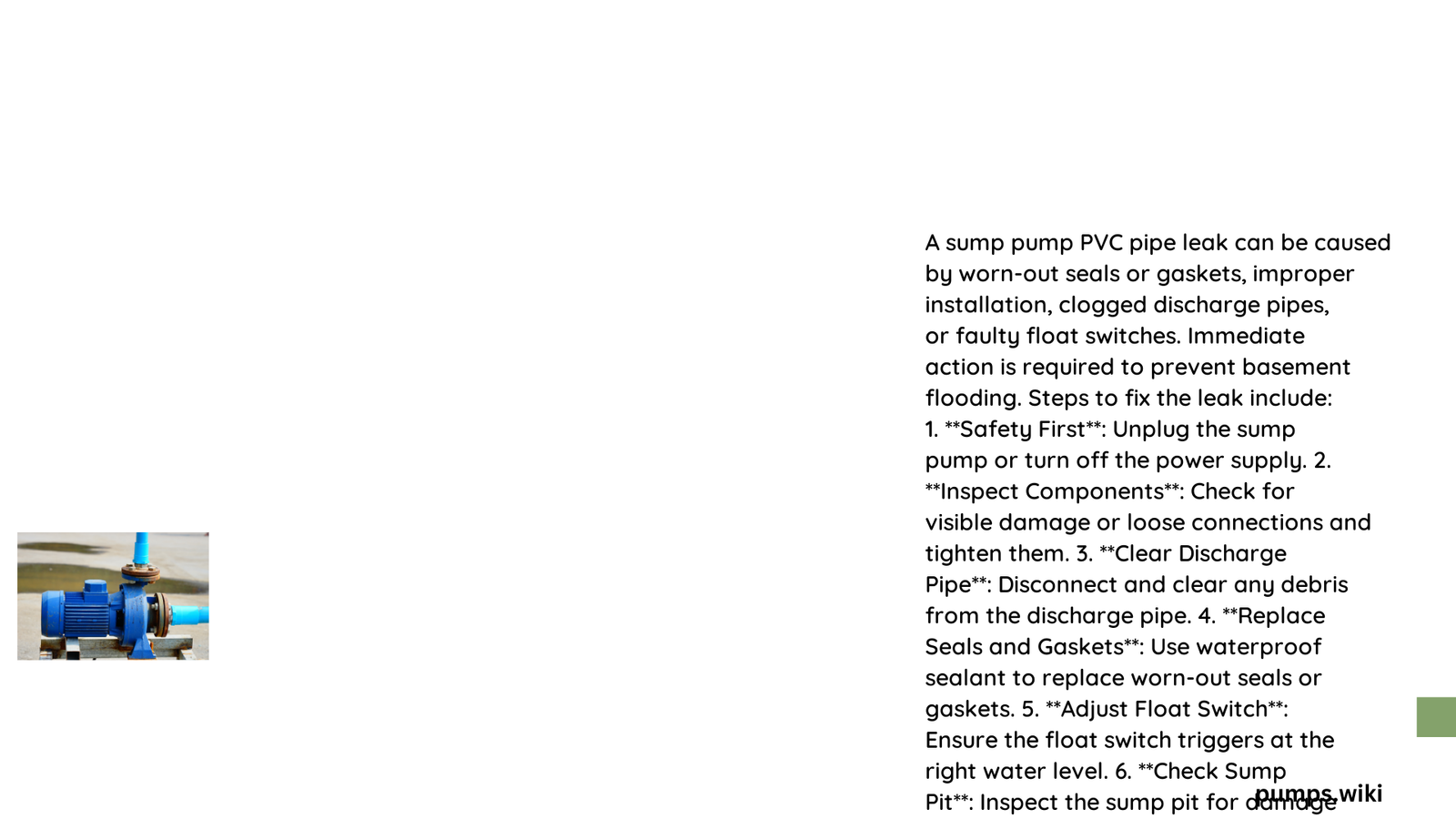Sump pump PVC pipe leaking can quickly escalate from a minor inconvenience to a significant home maintenance challenge. Water seepage through pipe connections, cracks, or damaged sections can compromise your basement’s integrity, potentially leading to structural damage, mold growth, and costly repairs. Understanding the root causes, detection methods, and effective repair strategies is crucial for homeowners seeking to protect their property from water-related issues.
What Causes Sump Pump PVC Pipe Leaks?
Why Do Connections Become Loose?
Loose connections are a primary culprit in sump pump PVC pipe leaking. Several factors contribute to this issue:
- Vibration from Pump Operation: Continuous pump cycling can gradually loosen pipe fittings
- Temperature Fluctuations: Expansion and contraction of materials create stress on connections
- Improper Initial Installation: Inadequate sealing or incorrect fitting techniques
How Do Blockages Impact Pipe Integrity?
Blockages create significant pressure risks:
| Blockage Type | Potential Consequences |
|---|---|
| Debris Accumulation | Increased internal pressure |
| Ice Formation | Pipe stress and potential cracking |
| Sediment Build-up | Reduced water flow efficiency |
What Environmental Factors Contribute to Leaks?
Environmental conditions play a critical role in PVC pipe deterioration:
- Freezing Temperatures
- Causes pipe brittleness
- Increases risk of structural damage
-
Potential for micro-fractures
-
Soil Movement
- Ground shifting
- Foundation settlement
- Pipe misalignment
Comprehensive Leak Detection Strategies

How Can You Identify a Leak?
Effective leak detection requires multiple approaches:
- Visual Inspection
- Check for water stains
- Examine pipe connections
-
Look for mineral deposits
-
Moisture Meter Testing
- Quantitative moisture assessment
- Pinpoint exact leak locations
- Non-invasive detection method
What Tools Are Essential for Leak Diagnosis?
Recommended diagnostic equipment:
| Tool | Purpose | Estimated Cost |
|---|---|---|
| Moisture Meter | Precise leak detection | $50 – $200 |
| Pressure Gauge | System pressure evaluation | $30 – $100 |
| Thermal Camera | Identify hidden moisture | $200 – $500 |
Repair and Prevention Techniques
What Are the Steps for Pipe Repair?
Systematic repair process:
- Power Disconnection
- Shut off sump pump electricity
-
Ensure complete system isolation
-
Leak Localization
- Identify precise leak location
-
Clean surrounding area
-
Material Preparation
- Select appropriate PVC pipe
- Gather necessary tools
- Prepare replacement sections
How to Prevent Future Leaks?
Proactive maintenance strategies:
- Regular pipe inspections
- Annual professional system check
- Install pipe insulation
- Maintain proper drainage around foundation
- Use high-quality PVC materials
Cost Considerations
What Will Repairs Potentially Cost?
Estimated repair expenses:
- DIY Repair: $20 – $50
- Professional Intervention: $100 – $300
- Extensive Pipe Replacement: $300 – $600
Expert Recommendations
Professionals suggest:
– Use Schedule 40 or Schedule 80 PVC pipes
– Ensure proper pipe diameter (1.5″ – 2″)
– Maintain pressure ratings appropriate for your system
– Consider professional installation for complex setups
Reference:
– Drain Express – Sump Pump Hose Problems
– Terry Love Plumbing Forums
– Sedona Waterproofing Solutions
